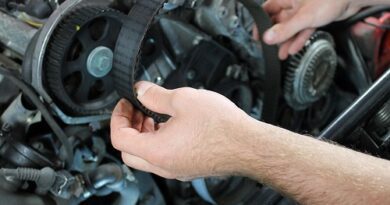Volkswagen Oil Change By Yourself
Do you want to complete the Volkswagen oil change by yourself? Here you will find Volkswagen oil change instructions video and image instructions for changing the oil in a VW. Do you have questions about how to change your VW’s oil and oil filter? Uncertain about the oil type a VW should use? What is VW’s oil fill capacity? This website is here to support you! The video and instructions below address your concerns about changing the oil in your VW.
Volkswagen Oil Change
With over 27 years of practical expertise, we have seen a lot of mechanical failures in vehicles as an independent VW service center. Experience has shown us that changing your fluids is the most crucial preventive maintenance procedure you can carry out to keep your car in good working order. However, this appears to be one of the maintenance areas that many VW owners overlook. Flushing your fluids thoroughly at the recommended intervals can extend the life of your car to 150k miles and beyond!
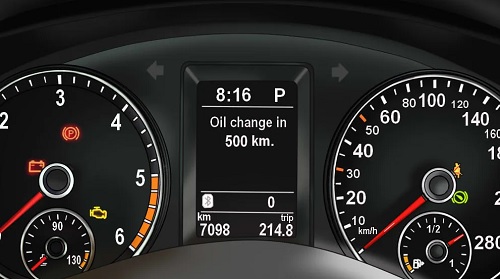
Basic Instructions For Changing VW Oil
- For information on changing the oil in a VW, consult the owner’s manual and factory manual.
- Our website advises getting your car maintained by an A.S.E. certified VW repair.
- When handling hot motor oil, use caution. When handling VW fluids, gloves and safety glasses are a must!
- 2007 example vehicle Volkswagen Jetta 2.0T FSI.
VW Oil Change Equipment Required
- T-25 Torx bit and 1/4″ socket screwdriver (For the under-body splash pan).
- Wrench, 19 mm (For the oil pan drain plug).
- Oil Drain Pan Container; 1/2″ 36mm Socket; 6″ Extension; Pouring Funnel.
First, let the engine oil warm up. Drive it for roughly 5 to 10 minutes to warm up the used motor oil for the best oil flow and effective drainage.
Usually, multiple T-25 screws are used to secure the under-body splash pan in place. Remove the under-body splash pan with a 1/4″ socket screwdriver and T-25 Torx bit. Pull the under-body splash pan firmly to the back of the car once all the screws are out. Underneath the engine’s oil pan drain plug, put an appropriate container or oil drain pan.
VW Oil Change Process
After that, pop the hood. Find the oil fill cap and loosen it, but leave it in place. By reducing crankcase pressure, old oil will flow and drain more easily while oil splashing is reduced.
Loosen and remove the oil pan drain stopper using a 19mm wrench. The oil pan drain plug on the 2007 Jetta V 2.0T FSI is on the back side of the oil pan. Permit the engine’s oil to flow into the oil drain pan container.
Check the oil pan drain plug and sealing washer while the oil is draining. Replace the oil drain plug if the threads on the plug are worn. Reinstalling a damaged oil drain plug could result in damage to the internal threads of the oil pan, necessitating the replacement of the entire oil pan.
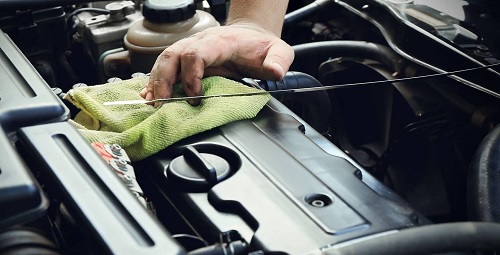
Additionally, a damaged oil drain cap might prevent the factory torque, resulting in a subpar seal and potential oil leakage. The washer should also be replaced if it appears to be crushed. If you don’t, there could be oil leaks. Examine the oil drain cap while the oil is draining. Every 4-6 oil changes, a new drain plug, and washer are advised (depending on condition).
Continue with Volkswagen oil change by yourself! Wipe out the oil pan of any extra or old oil. Install the washer and drain plug for the engine oil. Drain plug to 21-foot-pounds of torque.
Oil Draining
To be ready to remove the oil filter, place the oil drain pan container underneath the oil filter’s region. This is on the front side of the oil pan on the 2007 Jetta V 2.0T FSI.
The oil can be completely drained via the oil filter housing using the recommended VW T40057 VW oil drain adapter tool. You can avoid spending money on the VW T40057 oil change tool by following the instructions in the next step (How To Step 9) and letting the oil lightly stream before removing the filter and housing.
Remove the oil filter housing drain access cover’s fasteners and hang the cover-up. To remove the oil filter housing, turn the ratchet counterclockwise while using a 1/2″ 36mm socket, 6″ extension, and socket. Because cartridge oil filter housings are from plastic, it is best to treat them gently. Just enough oil should start to run out of the oil filter housing when you loosen it up. To avoid a huge surge and the ensuing oil spill, let the oil drip out slowly from the oil filter housing for around 30 seconds. After that, thoroughly remove the oil filter and housing to complete the oil draining.
Take the oil filter and o-ring out of the housing for the oil filter. Now, you are close to learning how to perform a Volkswagen oil change by yourself!
Replace the replacement o-ring seal that comes with your new oil filter after cleaning the oil filter housing. Apply fresh oil sparingly to the new oil filter housing seal. Place the fresh oil filter in the housing for the oil filter.
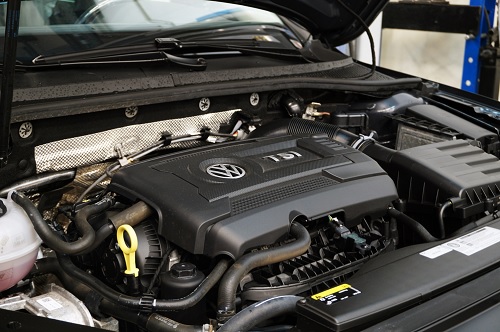
Oil Filter
Rethread the housing and new oil filter into position. oil filter housing to 17-foot-pounds of torque. If the oil filter housing is over-torqued, it may break, making the removal of the oil filter housing and the subsequent oil change very challenging. Don’t forget that our website also provides useful Volkswagen information from all other areas!
Open the oil fill lid and start adding the recommended VW oil. To reduce oil splashing and spilling over onto and under the decorative engine covers, it is usually advisable to use a funnel.
Add 0.5 to 1 liter LESS than the engine’s maximum capacity. Check the oil level using the dipstick, taking care not to overfill the engine. Add oil until the dipstick reads the appropriate oil level. Never let the oil level rise over the maximum mark on the dipstick. Catalytic converter damage and a severe engine oil burn can happen when the engine oil is overfilled. The excess oil needs to be drained from the engine if the oil level is higher than the maximum dipstick level. (A 2007 VW Jetta 2.0T FSI has a 4.6 liter capacity for VW oil).
Install the VW oil fill cap. Start the engine, and let it run for around 30 seconds. This will give you the chance to check for oil leaks by allowing the oil filter housing to fill with oil. Then check for leaks in the oil filter and oil drain plug sealing areas. Cut off the engine. The under-body splash pan is with installation if there are no leaks. Take the car off the jack stands or automotive lift. Make a final oil level inspection when the car is back on a level surface.
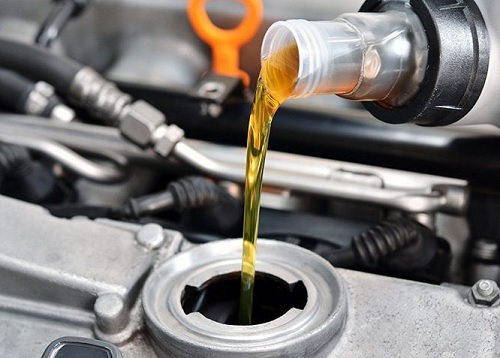
Final Process
As required, add more VW-approved oil. So the oil level must never rise above the dipstick’s maximum oil level. Catalytic converter damage and a severe engine oil burn are possible when the engine oil is too much. Then the excess oil needs to be drained from the engine if the oil level is higher than the maximum dipstick level. (A 2007 VW Jetta 2.0T FSI has a 4.6 liter capacity for VW oil).
So bring your used cooking oil to a licensed recycling collection facility to dispose of it responsibly. Record both the mileage as of the oil change and the next oil change due date in your records. Resetting the vehicle’s oil change interval system may be another option for future oil change notifications. In the end, the best way to ensure good car maintenance and future resale value are to keep thorough service records.


